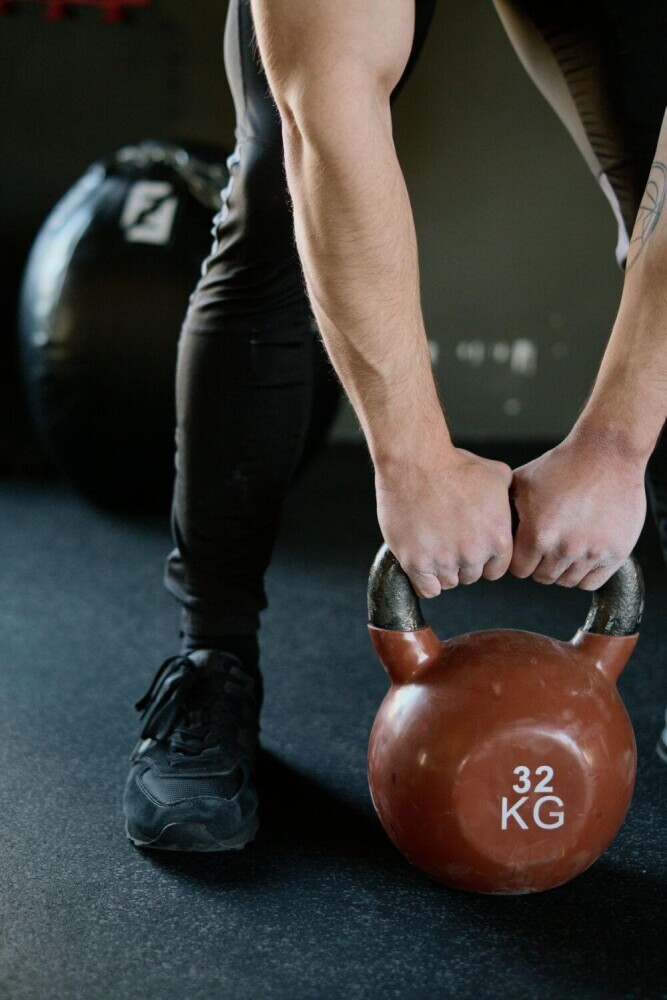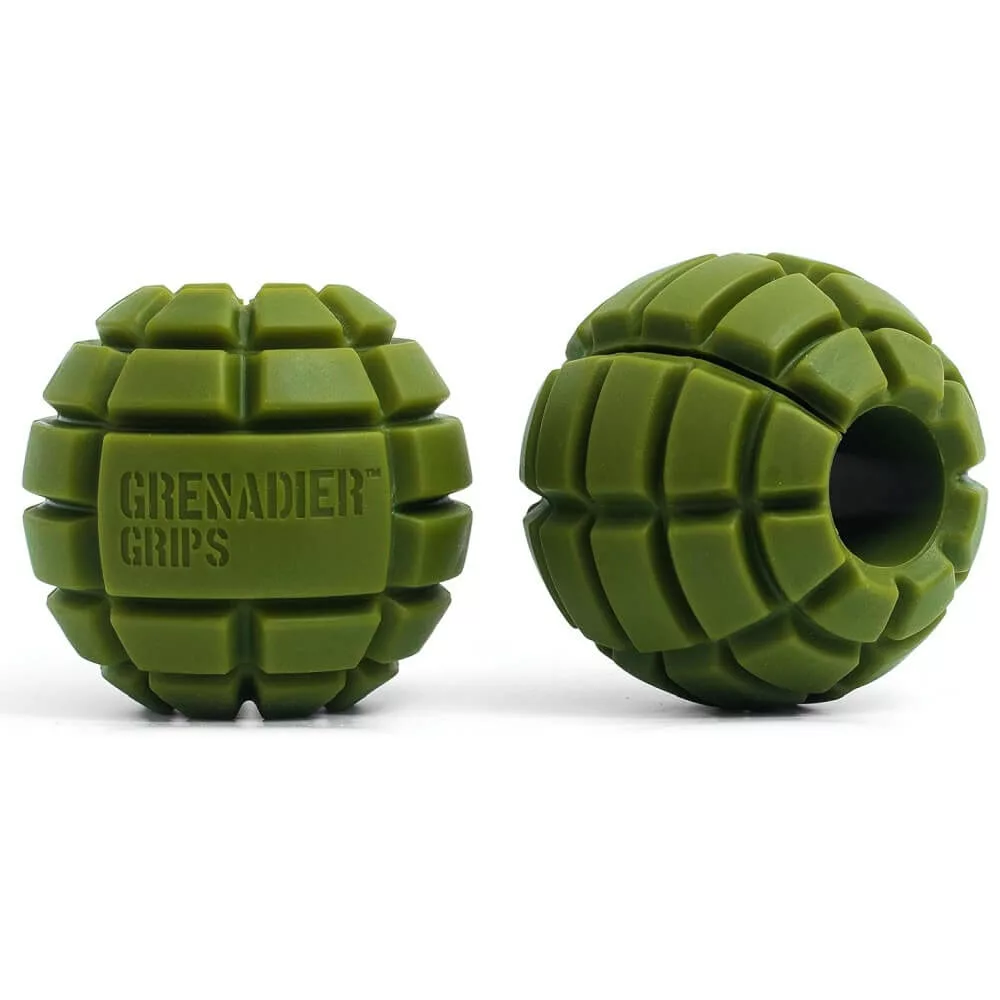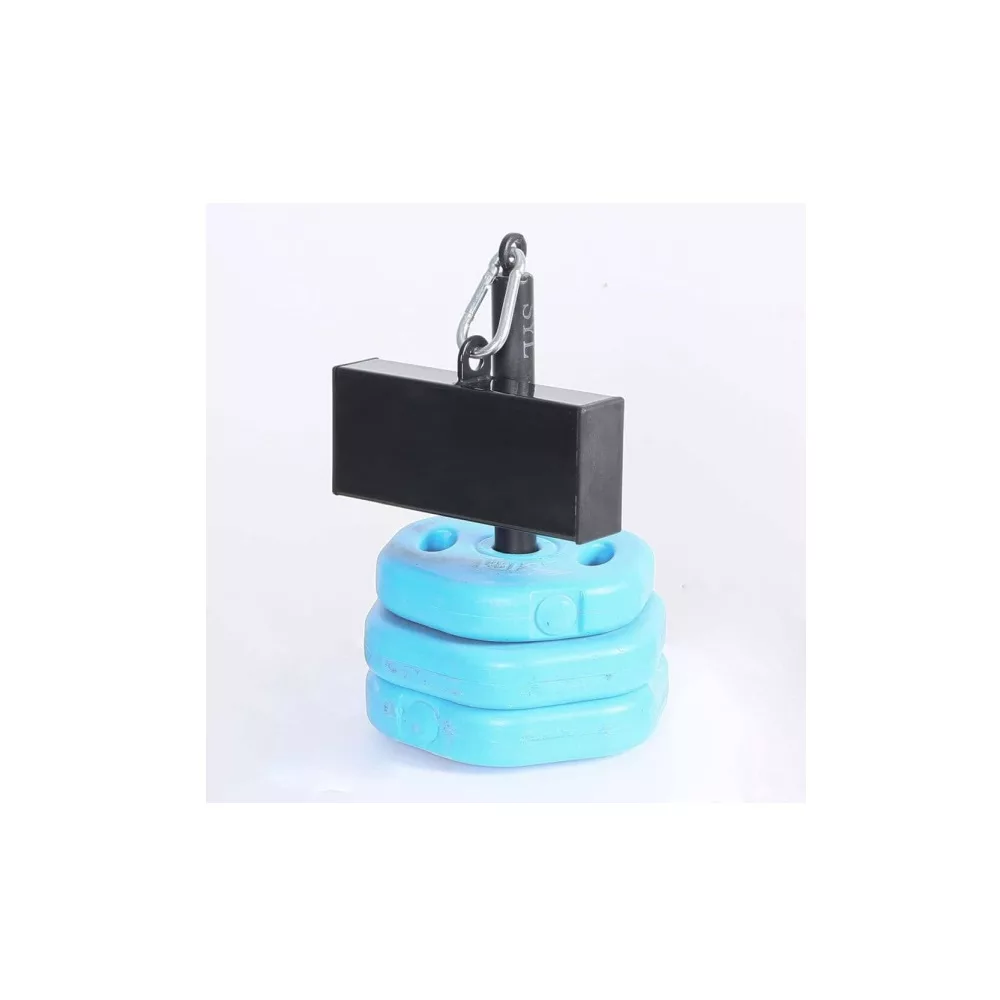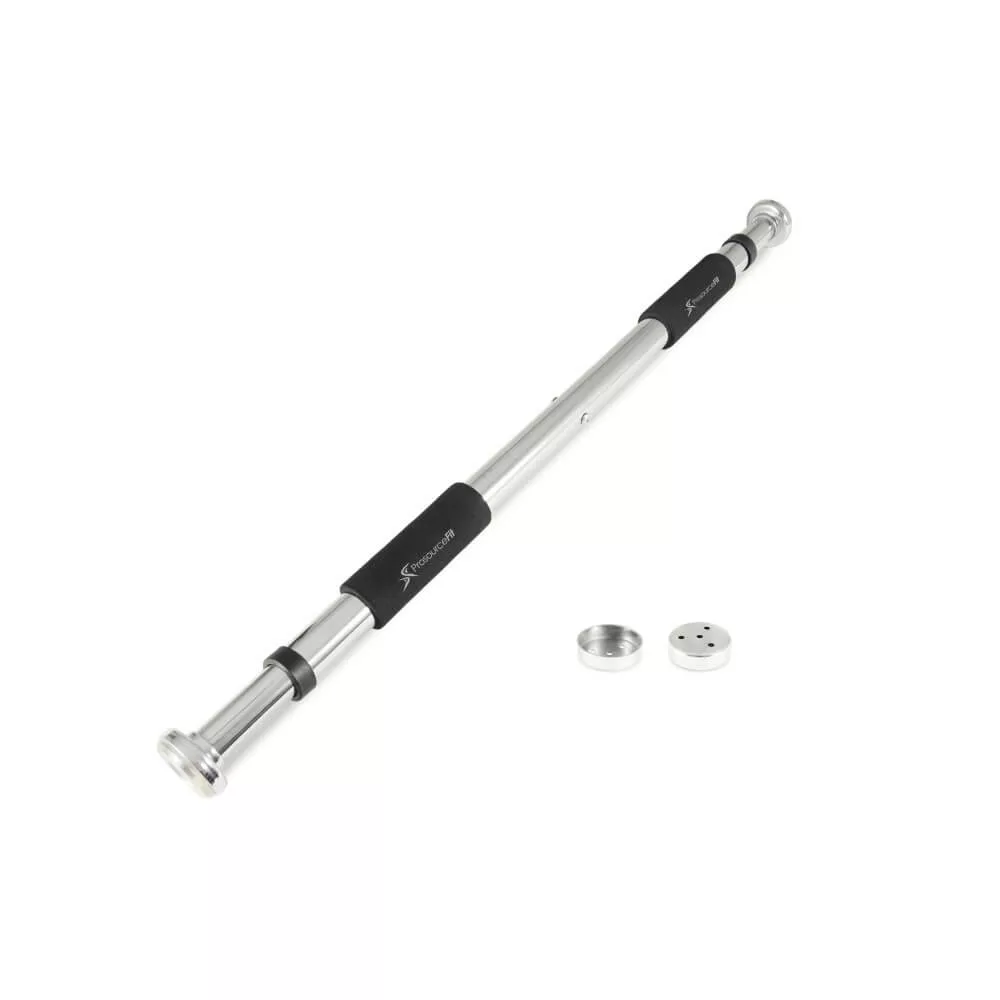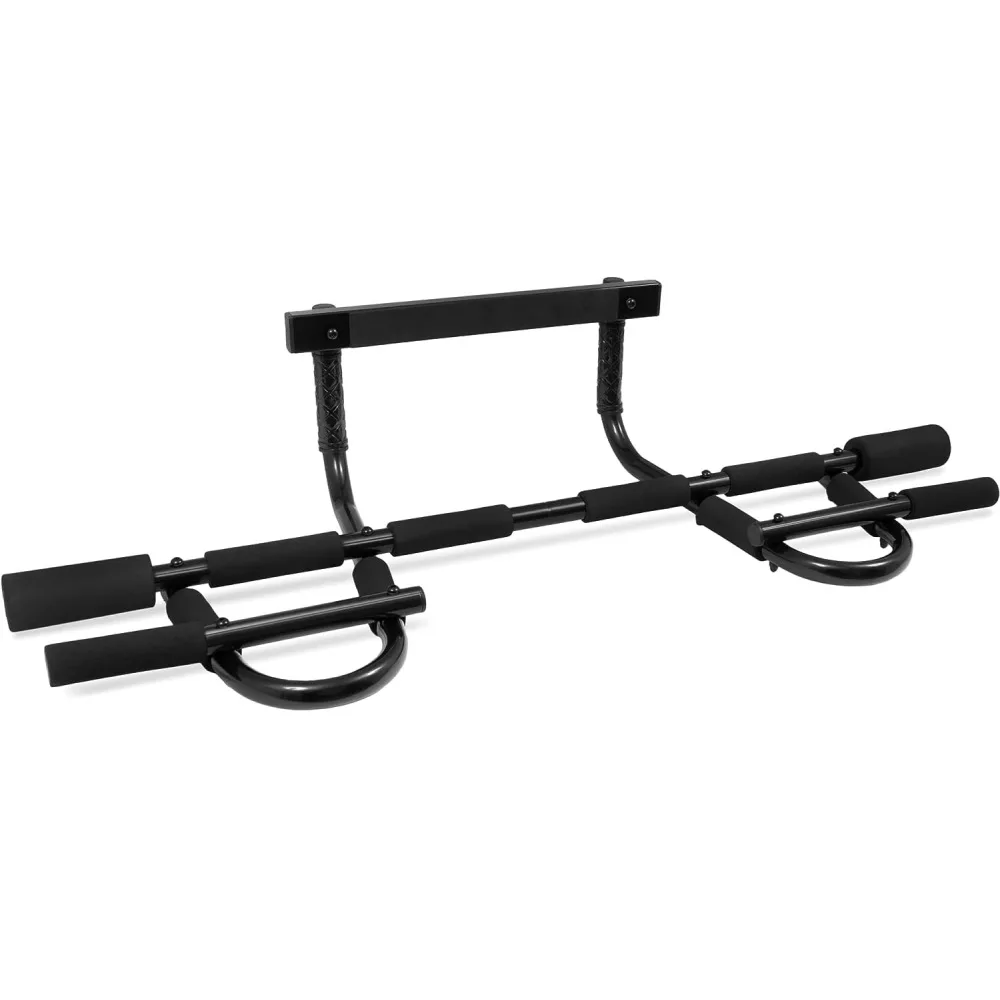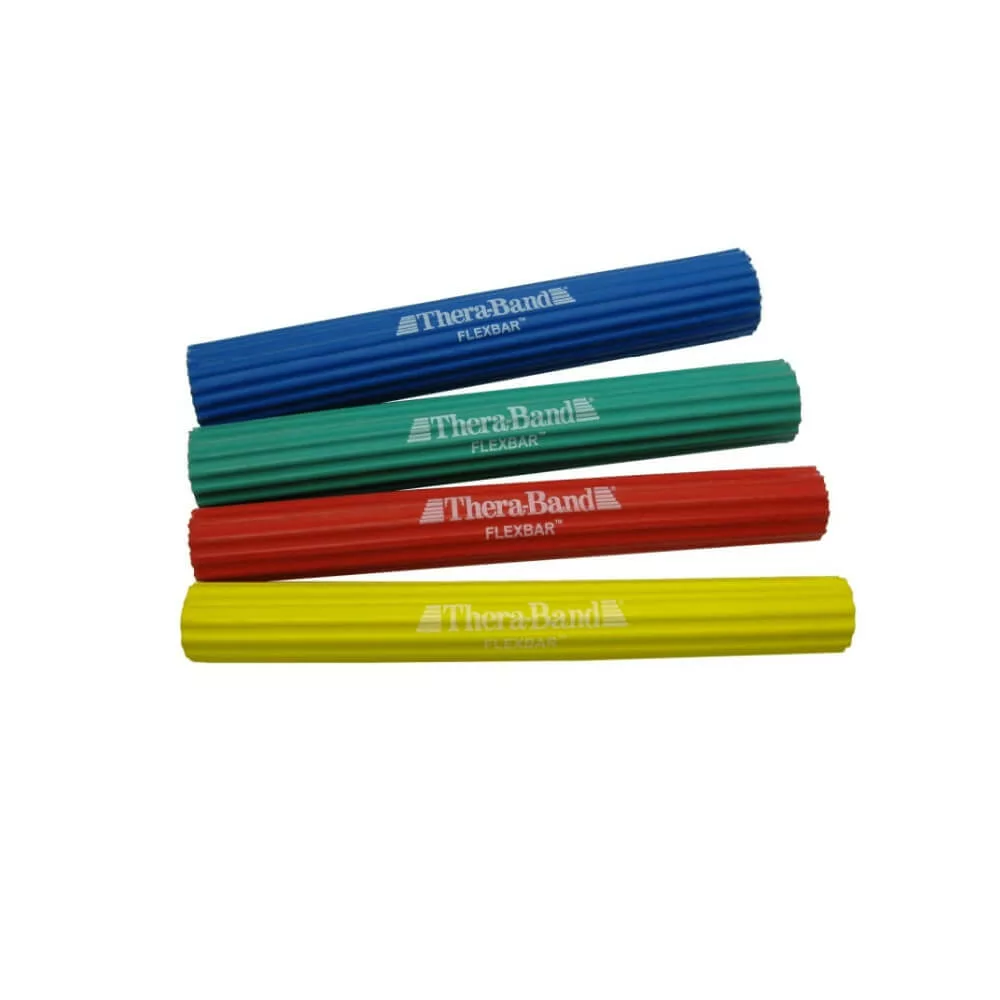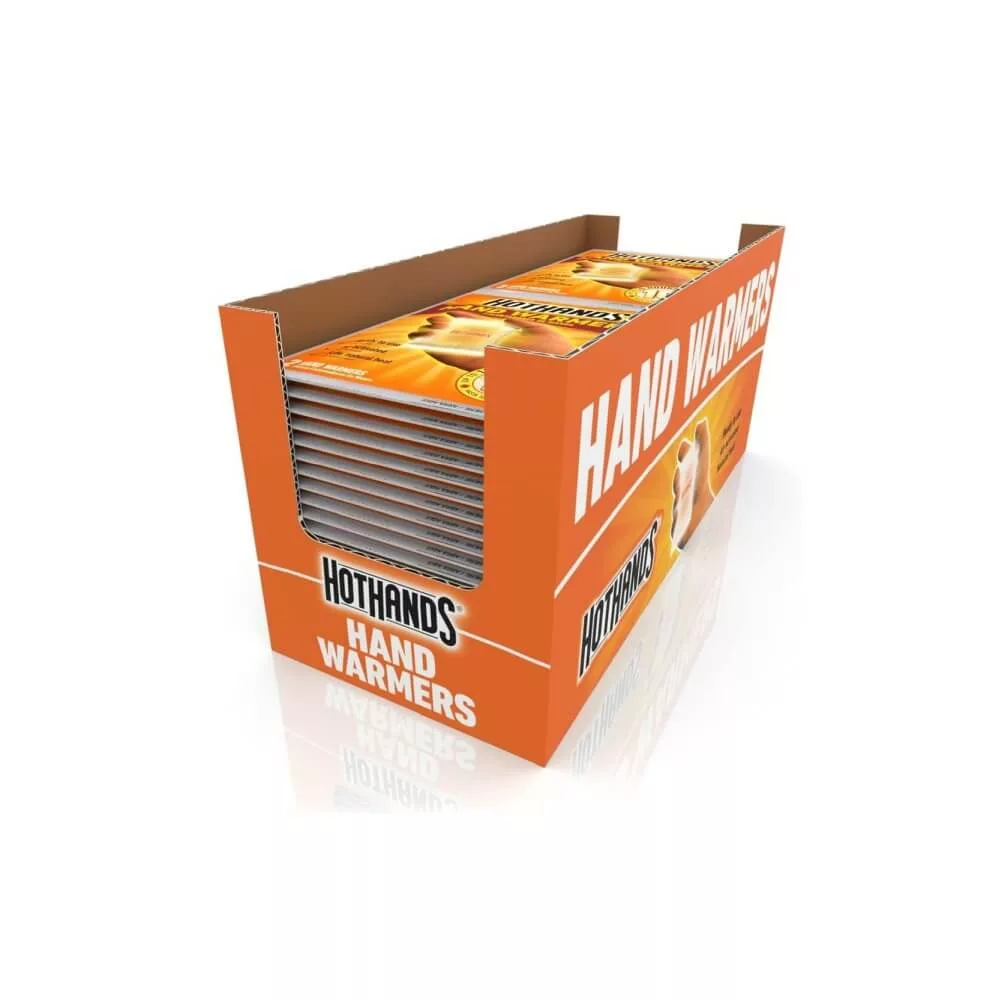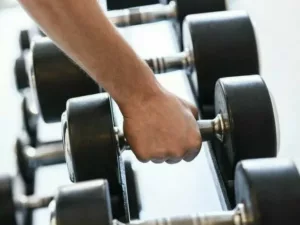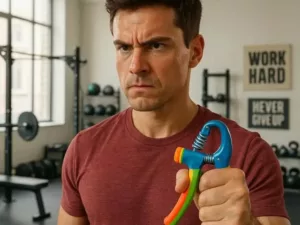(Last Updated on November 2, 2025 by Henry)
Grip strength plays a huge role in pretty much every physical activity we do. Whether you’re lifting weights, tackling a tough rock-climbing route, or just carrying heavy grocery bags, having strong hands, wrists, and forearms can make daily life a whole lot easier.
But it’s not just about lifting heavier or having a firmer handshake. Developing stronger grip strength is one of the most underrated ways to improve overall health and functional fitness.
Studies even link good grip strength to cardiovascular health, reduced injury risk, and greater longevity. So, training your hands and forearms isn’t just about building muscle; it’s about building a stronger, healthier version of yourself.
Improving your grip also has a direct impact on athletic performance. A solid grip enhances power transfer and control in sports like tennis, golf, and baseball, and it’s equally valuable for climbers, martial artists, and weightlifters.
When your hands can confidently hold, pull, and stabilize, every movement becomes more efficient and precise.
What’s fascinating is how grip strength connects to your entire body.
It’s not just your fingers doing the work; your forearms, shoulders, and even your core muscles engage to create true grip endurance.
That’s why many athletes incorporate grip trainers, wrist rollers, and hand grippers into their routines to build balanced, functional strength that carries over into real-world performance.
If you’re just starting your grip journey or looking to upgrade your current setup, check out my detailed reviews of the best grip strengtheners, forearm trainers, and wrist rollers. These tools can help you target specific areas of your hand and forearm, so you can progress faster and train smarter.
Understanding Grip Types and How They Affect Your Training
Grip strength isn’t one-size-fits-all. There are several distinct types of grip strength, each playing its own unique role in everyday tasks, workouts, and athletic performance. The three most important ones are the crushing grip, pinching grip, and supporting grip, and understanding how each works can help you tailor your grip training routine for faster progress.
The crushing grip is all about raw finger and hand power, the ability to squeeze something tightly. It’s what you use when shaking hands, closing a heavy-duty hand gripper, or crushing a soda can. This type of grip relies heavily on your forearm flexors and is often trained using grip trainers or adjustable grip strengtheners to build serious hand power.
Then there’s the pinching grip, which comes into play whenever you’re holding something between your fingers and thumb, like turning a doorknob, opening a jar lid, or holding a key. Training your pinch grip improves finger dexterity and thumb strength, both essential for rock climbers, mechanics, and grip sport athletes.
Finally, the supporting grip focuses on endurance, your ability to hold onto something for extended periods. Think of carrying heavy grocery bags, performing deadlifts, or hanging from a pull-up bar. Building supporting grip strength often involves tools like wrist rollers, thick bar attachments, or farmer’s carry handles, all of which help improve your grip stability over time.

Crush Grip Training: Best Exercises & Tools for Stronger Hands

Pinch Grip Training: Proven Exercises & Tools to Boost Thumb Strength

Support Grip Training: Build Endurance & Lift Heavier Safely

Finger Extensor Training: Prevent Hand Pain & Build Balance

The 5 Primary Hand Movements: Gateways To Grip Strength
It’s fascinating how grip strength evolves as we grow. Babies start with reflexive grips, gradually strengthening their hands through play and exploration. By adulthood, our grip strength becomes a reliable indicator of overall fitness, coordination, and even long-term health outcomes.
Unfortunately, there are a few common grip training myths that can hold people back. Many assume that bigger forearm muscles automatically mean stronger hands, or that grip training is only for bodybuilders. In truth, effective hand strength training involves more precise, controlled movements that target smaller stabilizing muscles in the hand, wrist, and forearm.
That’s why understanding these grip types and training them intentionally is key to unlocking your full grip potential. Whether you want to climb harder, lift heavier, or simply make everyday tasks easier, focusing on each grip type can help you improve grip performance across the board.
If you’re ready to start training with purpose, check out my in-depth guides on how to improve grip strength, plus detailed reviews of the best hand grippers, pinch trainers, and wrist rollers
Essential Grip Strengthening Tools for Beginners
Getting started on your grip strength journey doesn’t mean investing in expensive or complicated gym equipment. In fact, some of the most effective grip-strengthening tools are simple, affordable, and can fit right into your daily routine. The key is consistency, using the right tools regularly to build a strong foundation for long-term hand and forearm strength.
Hand Grippers
Hand grippers are arguably the most popular and accessible tool for beginners. They’re compact, portable, and incredibly effective for developing your crushing grip strength. You can use them anywhere, at your desk, in the car, or while watching TV.
When choosing a hand gripper, look for adjustable resistance levels so you can gradually increase the challenge as your grip improves. A quality adjustable gripper allows you to progress from light tension to advanced resistance safely and efficiently. I’ve personally tested and reviewed several of the best hand grippers for beginners and advanced users alike. They’re a great place to start if you’re unsure which model fits your goals.
Therapy Putty
Therapy putty is another underrated yet versatile option for improving hand strength and finger dexterity. It’s especially useful for targeting smaller stabilizing muscles in the fingers and thumbs. Available in multiple resistance levels, therapy putty can easily become a daily habit; just kneading it while watching TV or scrolling on your phone provides a light but effective workout.
For anyone recovering from hand fatigue or looking to prevent overuse injuries, therapy putty offers a safe way to increase strength without overloading the joints. You can even check out my guide on hand therapy exercises for grip strength to see how to integrate it into your warm-up or cooldown routine.
Resistance Bands
If you’re just getting started, resistance bands are another fantastic tool for building a well-rounded grip base. They’re not only great for developing supporting grip but also for improving wrist stability and forearm endurance. Incorporating bands into full-body workouts also helps improve grip indirectly, since nearly every pulling or holding motion engages your hands and forearms.
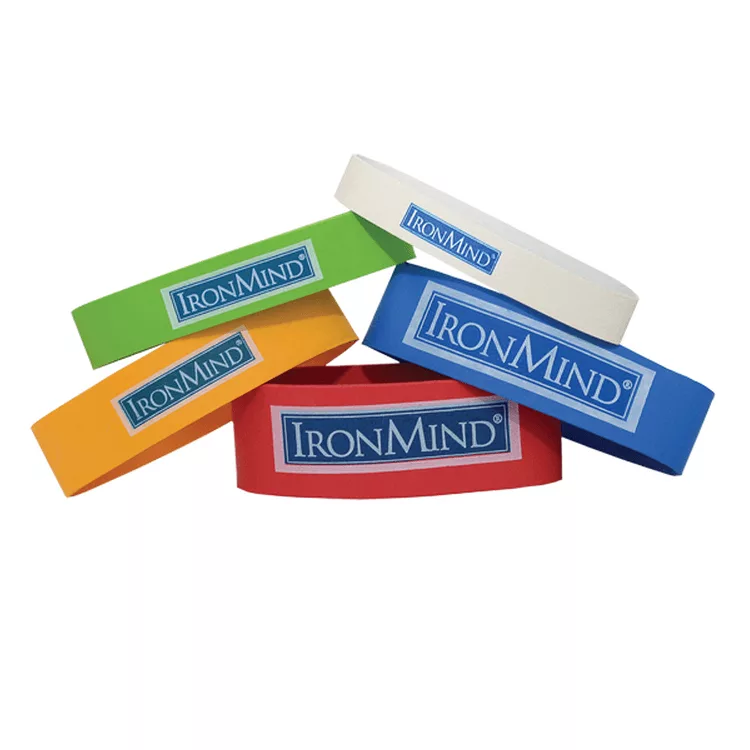
Why are Handbands Staple to Build Hand Muscle Balance?
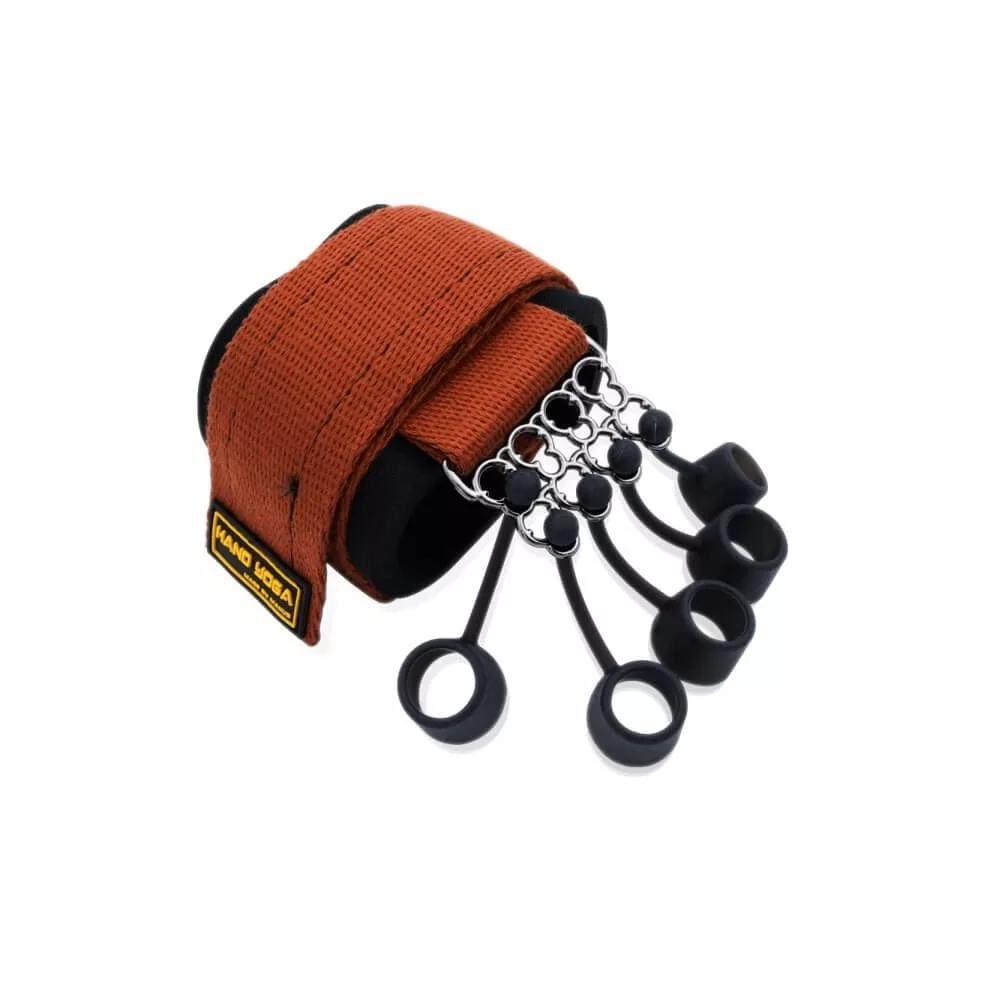
Fancy Finger Exerciser to Build Functional Grip Strength
Resistance bands come in different tensions, allowing for progressive overload and variation in your training. As your strength builds, you can pair them with wrist rollers or forearm trainers to target deeper grip muscles.
Wrist Rollers
Using these beginner-friendly tools regularly, even in short, focused sessions, will help you build a strong, functional base of grip endurance and hand coordination. Once you’re comfortable with these basics, you can confidently move on to more advanced tools like Captains of Crush grippers, fat bar grips, or wrist rollers for specialized training.
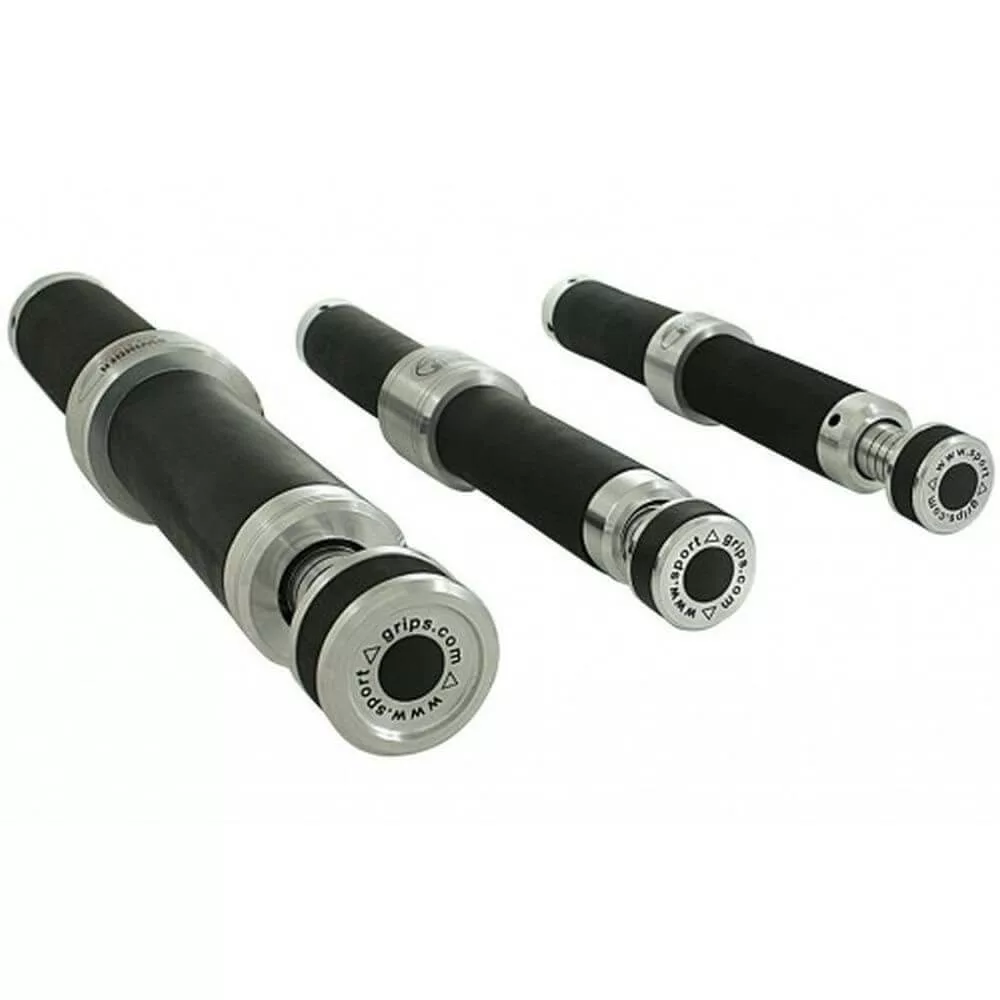
Blast Your Wrists with XL Wrist-Roller to Bulk Up Forearms

Ultimate Pinch Grip Trainer with Virtually Infinite Resistance?
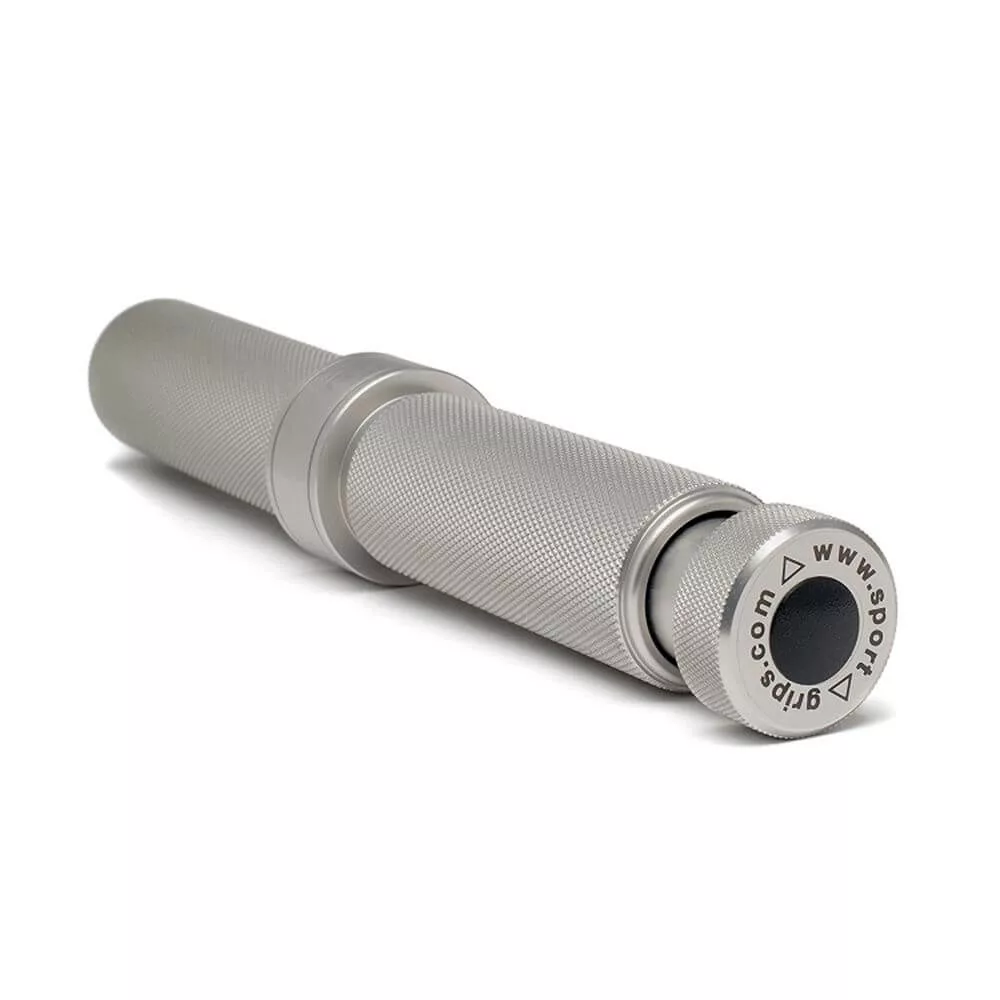
Modern, Rope-Less Wrist Roller: Sure Way to Get Strong Wrists
Like any fitness goal, improving grip strength comes down to consistency and gradual progression. These simple tools make it easy to build momentum, form lasting habits, and set yourself up for long-term success on your journey to improve your grip.
Advanced Grip Strengthening Equipment for Serious Training
Once the basic tools stop feeling challenging, it’s time to step up your game with more advanced grip training equipment. These tools push your limits and help you develop the kind of forearm and hand strength that separates casual trainees from serious grip athletes. Advanced gear can refine your technique, test your endurance, and unlock levels of grip performance you didn’t think possible.
Captains of Crush Grippers
Captains of Crush Grippers are legendary in the grip world, and for good reason. They’re precision-engineered to deliver consistent resistance across multiple strength levels, from beginner-friendly to professional-grade crushing power. Each model is rated with exact closing pressure, letting you measure your progress and set concrete goals.
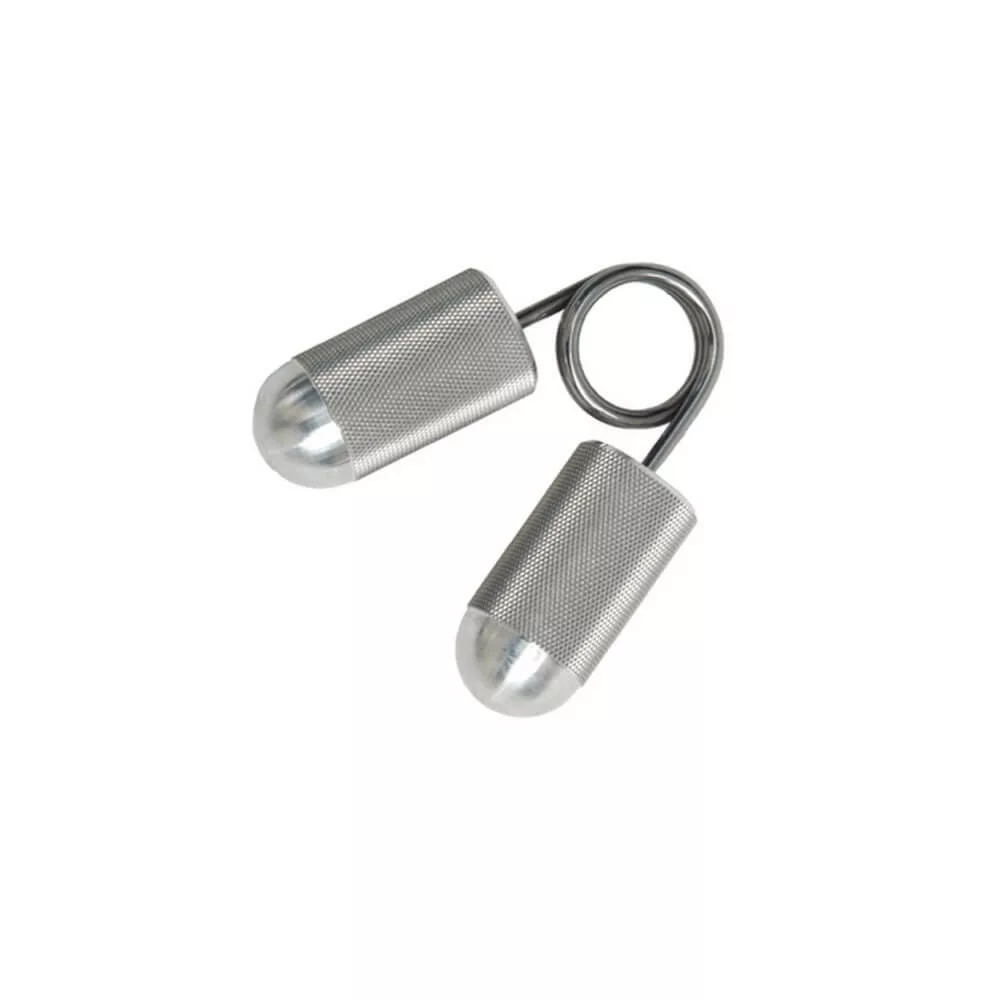
Specialized Spring Gripper to Skyrocket Your Thumb Strength
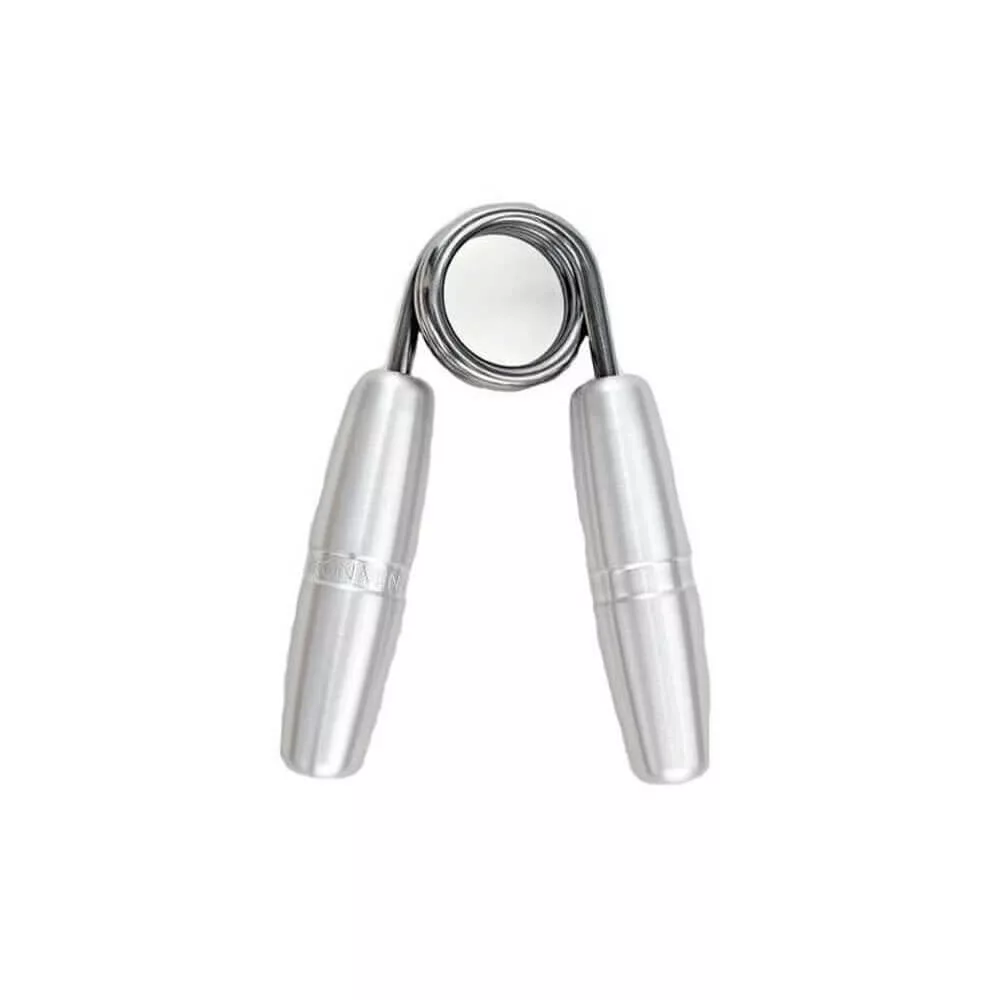
Smooth-Handle Gripper: Ideal For Rehab & Gentle Training

Is this Iconic Hand Gripper the Most Reliable Workhorse?
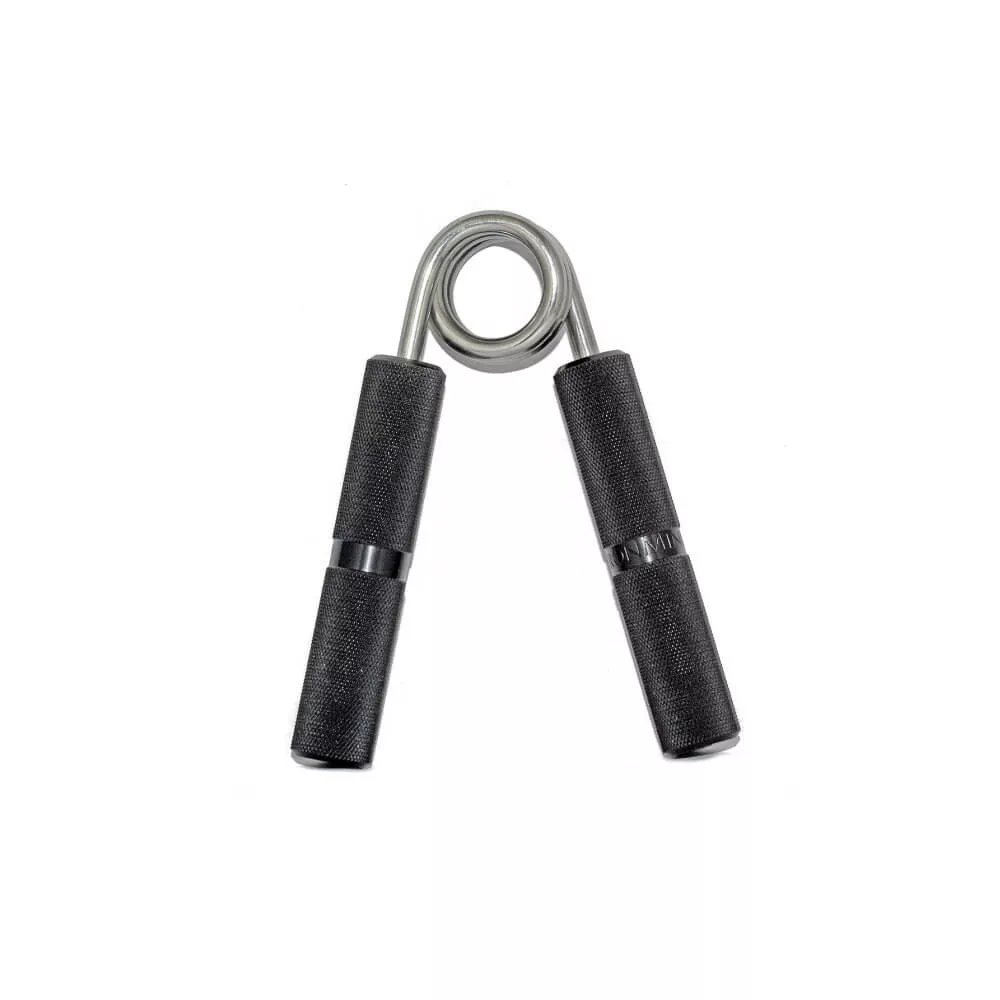
Left-Wing Springs: Crush Grip Trainer for Left-Handed Users?
These grippers are ideal for anyone ready to move beyond basic spring-loaded hand grippers. They train crushing grip strength at a serious level and are widely respected among grip sport competitors, powerlifters, and climbers. If you want to see how these compare to other high-performance grippers, check out my detailed Captains of Crush review and best advanced hand gripper guide.
Fat Gripz
Another game-changing tool for advanced users is Fat Gripz. By increasing the diameter of any barbell, dumbbell, or pull-up bar, they make your usual exercises significantly harder on your grip. The thicker handle forces your hands and forearms to engage more intensely, helping you build serious supporting grip strength and forearm density.
The best part? Fat Gripz are lightweight and portable, just snap them onto any bar and instantly transform your workout. They’re especially effective for compound lifts like deadlifts, rows, and curls. Many athletes also use them alongside wrist rollers or forearm trainers for comprehensive grip endurance development.
Weight Plates for Pinch Grip Training
It might surprise you, but simple weight plates are one of the best tools for pinch grip training. Holding a plate between your thumb and fingers forces your pinch muscles to engage in ways other exercises can’t replicate. Start with lighter plates and gradually work your way up, focusing on control and tension.
For added variety, try timed holds or plate curls, both excellent ways to improve your finger and thumb coordination. Pairing pinch work with gripper or thick-bar training provides a well-rounded challenge that hits every aspect of your grip.
These advanced tools aren’t just about brute strength; they’re about refining your control, endurance, and hand mechanics. While basic gear lays the foundation, advanced tools like Captains of Crush Grippers and Fat Gripz push you toward elite levels of hand and forearm development.
If you’re ready to upgrade your setup, explore my expert comparisons of the best advanced grip trainers, fat bar attachments, and forearm rollers. Investing in these next-level tools can help transform your grip from strong to unstoppable.
Best Practices for Using Grip Gear Safely and Effectively
Proper form and technique can’t be stressed enough when it comes to using grip strengthening tools. It’s easy to rush through sets or overdo the reps, but focusing on correct hand placement and controlled movements is what truly builds long-term strength. Good technique not only maximizes each rep’s effectiveness but also helps prevent unnecessary strain or injury to the small muscles and tendons in your hands and forearms.
If you’re unsure about your form, start with lighter resistance and master the movement first. Tools like hand grippers, wrist rollers, or Fat Gripz each require slightly different techniques to target the right muscles. I’ve outlined specific grip training form tips and demonstration videos that show how to perform each exercise safely and efficiently.
Establishing a Routine
Consistency is key, but so is moderation. Two to three focused grip sessions per week are typically ideal. This frequency allows your hands, wrists, and forearms to recover properly while still making steady progress. Many beginners think more is better, but overtraining small muscle groups can lead to fatigue and slow gains.
Just like any strength training routine, rest days are where the real progress happens. During recovery, your hand and forearm muscles rebuild and adapt, becoming stronger and more resilient. I often recommend pairing grip sessions with complementary upper-body workouts, such as pull-ups, rows, or deadlifts, to make your grip training routine more functional and efficient.
Tracking Your Progress
Keeping a grip strength log can be incredibly motivating. Record your resistance levels, reps, hold times, and any personal bests. You’ll be able to see measurable improvement over time, whether that’s closing a tougher gripper, holding a plate longer, or increasing your crushing grip endurance. Many lifters even test their progress with grip dynamometers, which can provide quantifiable feedback on your grip strength progression.
Listen to Your Body
Pay close attention to what your body is telling you. If you experience sharp pain (beyond normal muscle fatigue), stop immediately and assess what’s going wrong. Overuse injuries like tendonitis or strain are common when people push too hard, too fast. The goal of grip training is gradual, consistent progress, not overnight results. Patience and good recovery habits will keep you training safely for years to come.
Integrate Grip Work into a Broader Routine
Grip training shouldn’t exist in isolation. Integrating grip work into your larger fitness program creates balance and better overall strength development. Movements like farmer’s carries, pull-ups, and kettlebell swings naturally enhance grip endurance while working your back, shoulders, and core.
By combining dedicated grip work with full-body training, you’ll not only improve your grip strength but also increase total athletic performance and resilience. It’s this holistic approach that transforms grip training from a side focus into a foundational part of your overall fitness.
Suppose you’re looking for more structured guidance. In that case, I’ve put together a comprehensive beginner-to-advanced grip training program, along with detailed reviews of the top grip trainers and accessories, to help you build strength safely and effectively.
Innovative Grip Devices and Smart Technology for Modern Training
The world of grip training isn’t limited to classic tools anymore. With modern technology and innovation shaping fitness equipment, a new wave of advanced grip devices is emerging, combining smart features, adjustable resistance, and precise feedback systems. These cutting-edge tools can make your grip workouts more efficient, engaging, and data-driven than ever before.
Gripmaster: Finger Isolation Trainer
One standout innovation is the Gripmaster, a compact device that offers individual finger resistance training. Unlike traditional grippers that train your whole hand at once, the Gripmaster isolates each finger, helping improve strength, coordination, and dexterity independently.
This makes it especially valuable for those in precision-based sports such as archery, climbing, and golf, or even musicians like guitarists and pianists who rely on refined finger control. Training with a finger strengthener like the Gripmaster can dramatically improve hand endurance and fine motor accuracy.
If you want to explore how the Gripmaster compares to other top finger trainers, check out my in-depth Gripmaster review and alternatives guide.
Smart Wearable Grip Trainers
Another exciting development in the grip world is the rise of smart wearable grip trainers. These devices use sensors to measure your grip force, recovery rate, and training consistency, syncing with smartphone apps to deliver real-time data and progress tracking.
Some models even offer AI-generated workout suggestions, adapting resistance and volume based on your personal performance trends. It’s like having a virtual grip coach guiding your sessions, helping you improve your grip performance without guesswork.
As technology continues to advance, expect to see more wearable grip tech integrated with smart fitness ecosystems, an ideal choice for athletes who love data-driven training.
Customizable Resistance Gear
Modern customizable resistance tools are redefining the grip training experience. Adjustable grippers, dynamic resistance balls, and spring-loaded forearm trainers allow you to fine-tune intensity as your strength improves. This kind of progressive overload ensures steady, measurable gains while minimizing injury risk.
Being able to personalize your resistance settings helps you build both power and endurance at your own pace. For example, if you’re moving from beginner to intermediate levels, you can gradually increase tension instead of jumping into advanced resistance too early.
I’ve reviewed several of the best adjustable grip strengtheners and smart resistance trainers, which can help you choose gear that aligns with your current fitness level and training goals.
The Future of Grip Training
Exploring these innovative grip devices can bring a new level of excitement and precision to your training routine. Whether you’re using finger isolation tools, smart wearables, or adjustable resistance systems, these technologies push the boundaries of what’s possible with grip strength development.
They’re ideal for anyone looking to break workout monotony, track measurable progress, and use modern tools to improve functional strength. As innovation continues, expect grip training to become even more interactive, efficient, and personalized, helping you improve your grip like never before.
Grip Gear Maintenance and Care Tips
Taking care of your grip-strengthening tools is essential not only for extending their lifespan but also for maintaining consistent performance. Whether you’re using hand grippers, resistance bands, wrist rollers, or Fat Gripz, proper maintenance ensures your gear performs just as well after months or even years of use.
Keep It Clean
Regular cleaning prevents sweat, dirt, and oils from building up on your equipment. Over time, grime can wear down materials or make handles slippery, reducing both comfort and safety. After each workout, a quick wipe-down with a damp cloth or mild cleaning solution works wonders. For metal grippers, avoid soaking them; instead, dry them thoroughly and apply a light touch of lubricant to moving parts if needed.
If you’re training multiple times a week, consider a deeper clean every month. Keeping your gear clean also helps maintain grip texture, ensuring optimal traction and control during every session.
For detailed cleaning steps, see my grip gear maintenance guide, where I cover proper care for different tool types, from rubber resistance bands to steel-handled grippers.
Store It Right
Proper storage can dramatically extend the life of your grip strength tools. Keep them in a cool, dry environment away from direct sunlight and humidity. Excess heat can weaken rubber components, while moisture can cause metal parts to rust or corrode.
If you train at home, designate a dedicated drawer, gym bag, or wall rack to organize your grip equipment. Not only does this protect your gear, but it also helps you stay consistent by keeping your tools visible and ready for your next session.
Watch for Wear and Tear
Sometimes, the signs of wear aren’t obvious until your performance drops. Regularly inspect your tools for subtle signs of deterioration, fraying on resistance bands, slipping handles on grippers, or reduced tension in springs. Addressing small issues early helps prevent both injuries and wasted workouts.
If you notice your grippers closing too easily or your resistance bands losing elasticity, it’s probably time for an upgrade. I’ve reviewed the best replacement hand grippers and durable resistance bands to help you find long-lasting options that can handle heavy use.
Replace When Necessary
Knowing when to replace your gear is just as important as using it correctly. Training with worn-out equipment can make your workouts less effective and increase the risk of strain or slippage. High-quality grip strength tools should last for years with care, but every product has a lifespan.
When it’s time to upgrade, take it as an opportunity to advance your training, perhaps moving from beginner grippers to Captains of Crush, or swapping old resistance bands for adjustable tension tools that match your growing strength.
Final Thoughts on Maintenance
A little attention to maintenance goes a long way. By cleaning, storing, and inspecting your grip gear regularly, you can enjoy years of consistent performance and safe training. Proper care ensures that every rep, squeeze, and hold counts, helping you improve your grip effectively while protecting your investment in fitness.
For more maintenance advice, product recommendations, and grip strength training tips, check out my latest guides and reviews.
Maximizing Grip Strength Gains with Smart Training Strategies
Integrating grip training into your existing workout routine is one of the most effective ways to build lasting strength and improve performance. By pairing grip exercises with compound lifts like deadlifts, pull-ups, or rows, you not only target your hands and forearms but also amplify the overall intensity and efficiency of your workouts. Every rep becomes more demanding and more rewarding as your grip endurance improves.
Integrate Grip Work Strategically
You don’t need to overhaul your training schedule to see results. Just a few focused minutes of grip training at the end of each workout can make a big difference. Try adding sets of hand gripper squeezes, plate pinches, or Farmer’s carries between regular lifts. These micro-sessions strengthen your grip without eating into your main workout time.
For example, performing Fat Gripz deadlifts or pull-up holds naturally reinforces supporting grip strength while working your back and core, a perfect way to combine efficiency with progress. I’ve shared several grip integration workout ideas that fit seamlessly into strength, CrossFit, or climbing routines.
Prioritize Recovery
Just like any muscle group, your hands and forearms need time to recover and rebuild after training. Overworking them can lead to strain, fatigue, or even overuse injuries like tendonitis. Proper rest between sessions allows for real growth and prevents burnout.
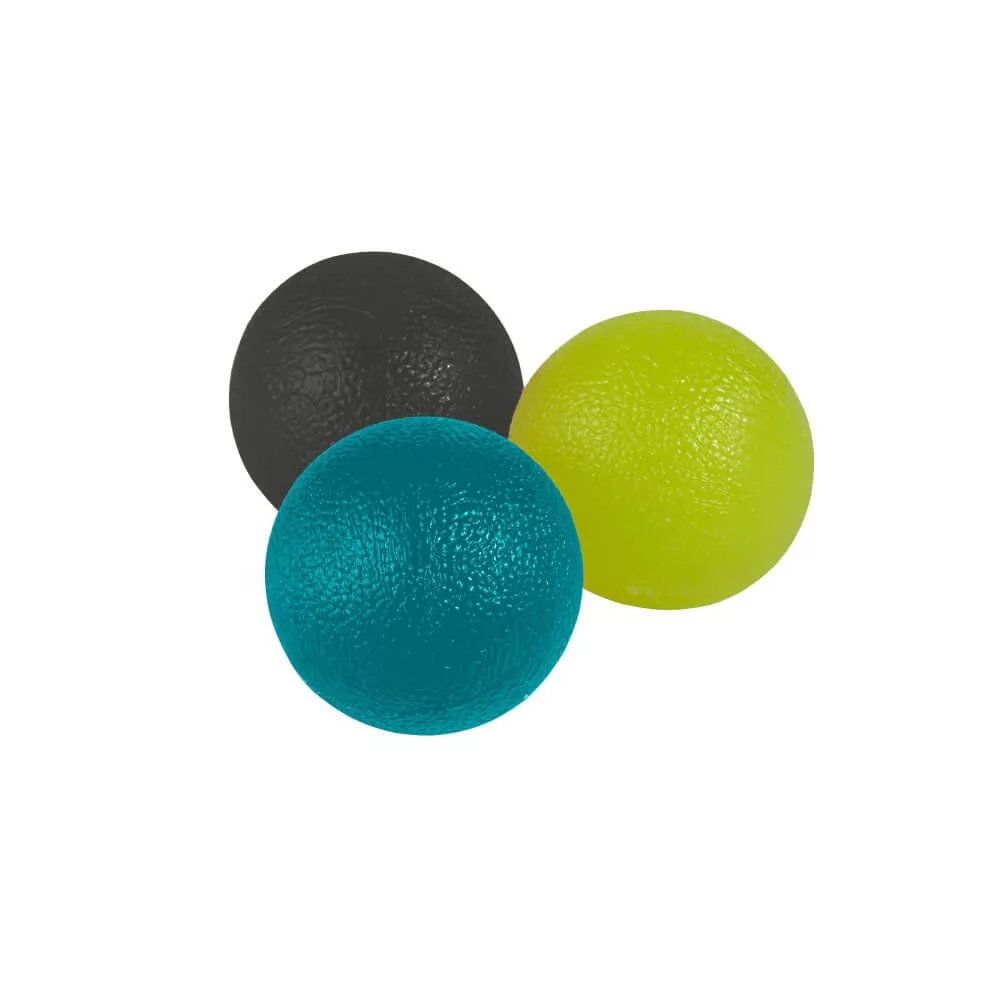
Hand Exercise Balls: Simple Relief & Strength for Tired Hands
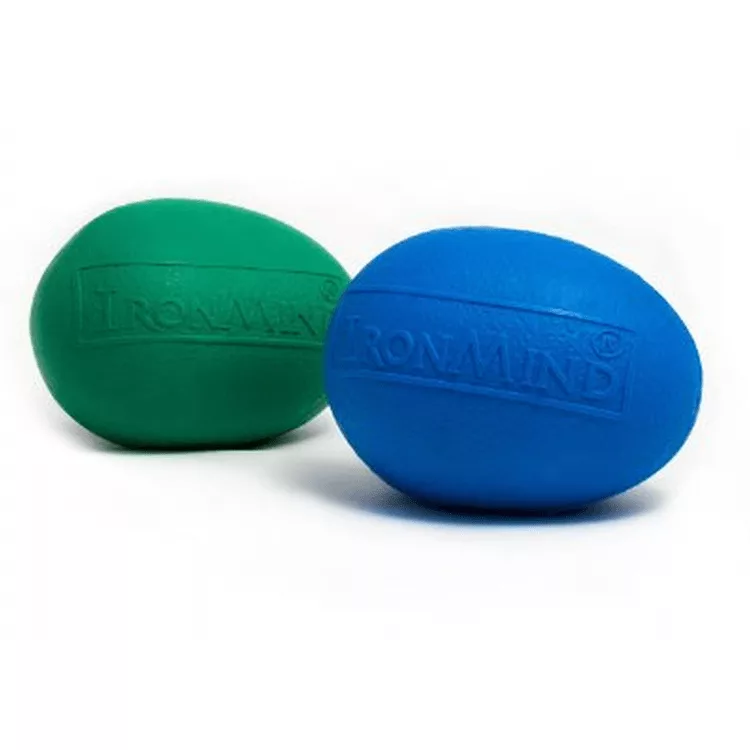
Fantastic Hand & Finger Strength Trainer to Keep Grip in Shape
A good rule of thumb: treat your grip muscles with the same respect you give to your larger muscle groups. Train hard, but recover fully. Light mobility work, stretching, or therapy putty exercises can help improve blood flow and speed up recovery between sessions.
Keep Your Routine Varied
Variation is key to maximizing grip strength gains and avoiding training plateaus. Rotate through different exercises, resistance levels, and equipment to challenge your grip from multiple angles. Alternate between crushing, pinching, and supporting grip drills to build complete, functional hand strength.
For instance, one session might focus on grippers and pinch blocks, while another emphasizes wrist rollers and thick bar holds. Changing up the stimulus keeps your muscles adapting and your motivation high. You can explore my list of the best grip training exercises for variety and progression.
Train Smart, Not Just Hard
Ultimately, effective grip strengthening isn’t about overloading your hands every day; it’s about training consistently, intelligently, and with purpose. Combining smart programming with proper recovery ensures long-term success while preventing setbacks.
This balanced approach doesn’t just improve your grip; it enhances your overall functional fitness, helping you perform better across every area of your training.
If you’re serious about taking your results further, check out my grip strength program for beginners to advanced athletes and detailed reviews of the top-rated grip trainers designed to help you improve your grip strength safely and effectively
Conclusion: Building Your Grip Arsenal for Lifelong Strength
Looking back at all the tools and techniques we’ve explored, it’s clear that building grip strength is about so much more than just hand power; it’s about consistency, smart training, and the right equipment. Over time, I’ve learned that when you commit to improving your grip, you’re not just enhancing athletic performance; you’re building confidence in everyday life, too. Whether you’re a climber, musician, athlete, or someone who just wants to make daily tasks easier, stronger hands can make a world of difference.
Choosing the right gear for your level and goals is key. Beginners might see amazing progress with simple hand grippers or stress balls, while more advanced trainers can push limits with tools like Captains of Crush Grippers, Fat Gripz, or even smart wearable grip trainers. The right gear helps you stay consistent, and consistency is what leads to real, lasting strength.
For me, grip training has always been about more than muscle. It’s about feeling capable and in control, knowing that each workout is improving my performance and overall health. Grip strength directly connects to functional fitness, joint stability, and even longevity, making it a foundational skill everyone should invest in.
As you continue building your grip arsenal, remember: progress happens with patience and purpose. Practice regularly, keep your routine varied, and listen to your body along the way. Each new challenge, from heavier grippers to more advanced holds, represents another step toward your strongest self.
Building your grip is a journey, not a destination. With the right mindset, the right tools, and steady effort, you’ll develop not just stronger hands but a stronger version of yourself, ready for whatever life (or the barbell) throws your way.
Thanks for Stopping By
Have Questions?
Please Leave A Comment
[nx_spacer size=”10

